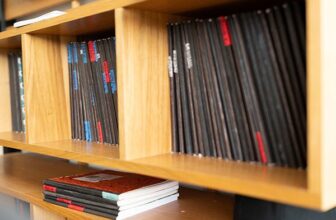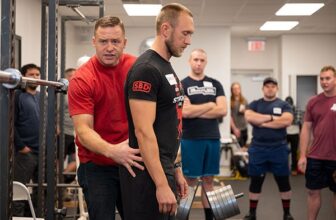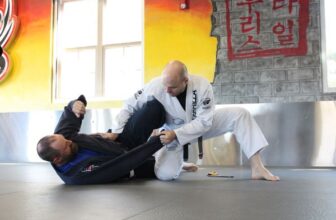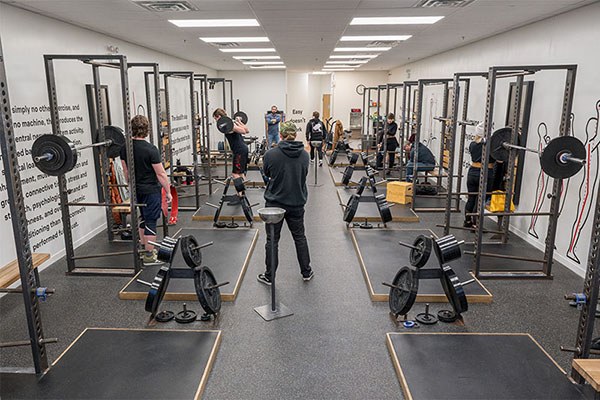
[adinserter block=”2″]
February 05, 2024
Whistle-Pig Edition
On Starting Strength
-
Ploughman’s Lunch and the Miser’s Feast –
Rip talks to Brian Yarvin, author of The Ploughman’s Lunch and the Miser’s Feast, A World of Dumplings, and Lamb: A Global History, about his travels involving food. -
That Damn Voice by Jim Steel –
Sports and training has been part of my life since I was a little kid. Now, in my mid 50s, I don’t compete in sports anymore… -
Introduction to Shotguns – Useful Modifications –
Nick Delgadillo shows useful, and sometimes required, modifications to a defensive shotgun in order to make it more controllable. -
A Better Down, A Better Up by Bruce Trout –
There are many different errors one might make while pressing the bar, either overhead or from the bench… -
No More Back Problems! –
Steve Spears discusses his weight loss and gain journey, his discovery of Starting Strength, and how it transformed his fitness and strength training approach. - Weekend Archives:
Mental Toughness by Mark Chidley –
Since following the Starting Strength program starting in June of 2015, I’ve had some interesting connective experiences to my day-to-day work… - Weekend Archives:
Active Hip 2.0: The Directors’ Cut by Mark Rippetoe & stef bradford –
The term “active shoulder” has been used to describe what happens when the muscles of the shoulder girdle are used to support weight overhead…
In the Trenches

The beginning of evening sessions at Starting Strength Chicago on a Friday night. [photo courtesy of Nick Delgadillo]

David Woods pulls 315×5 during the deadlift session at the Personal Trainer’s Workshop this weekend. David, who underwent two knee surgeries, owes his remarkable progress to his coach Chris Palladino. [photo courtesy of Mjoy Films]
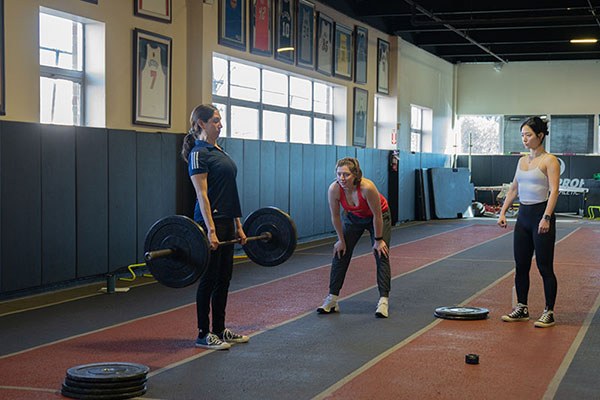
Cristina Barr practices the proper deadlift lockout during the train-the-trainer session of the Personal Trainer Coaching Workshop this past weekend. [photo courtesy of Mjoy Films]
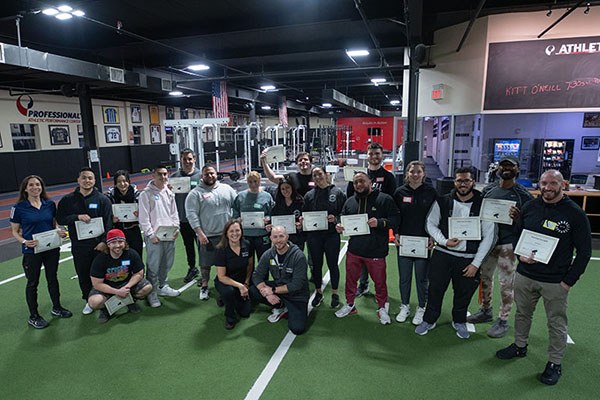
A group photo was captured at the conclusion of the recent coaching Workshop for Personal Trainers, where each participant had the opportunity to both coach and lift while delving into the principles of the Starting Strength method. The session concluded with an in-depth exploration of programming strategies and avenues for career advancement given by Inna Koppel and Chris Palladino. [photo courtesy of Mjoy Films]
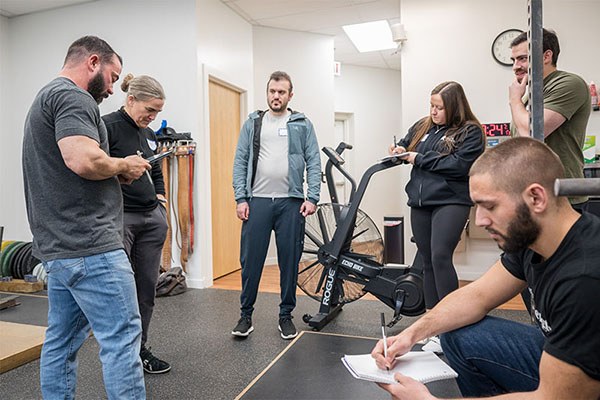
Attendees at the Rehab, Injury, and Pain Management Training Camp work through a rehab scenario with Will Morris before presenting their programming plan to the full group during the afternoon practical session. The camp was held at Starting Strength Chicago and was attended by SSCs, coaches, apprentices, and lifters. [photo courtesy of Nick Delgadillo]
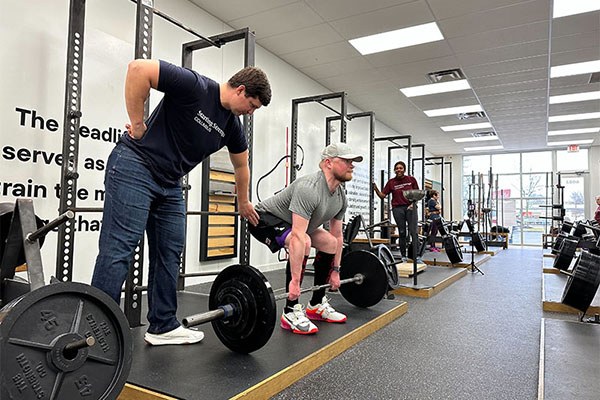
Sean Blood, a Columbus policeman, works through a set of deadlifts under the watchful eye of Starting Strength Coach Jarret Beck at Starting Strength Columbus. The correct hip height in the starting position of a deadlift allows for an efficient lift. [photo courtesy of Pete Yeh]
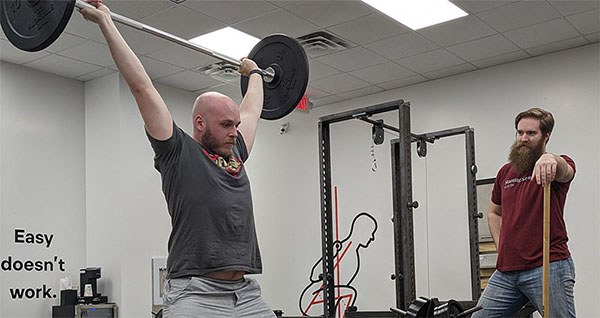
At Starting Strength Austin, Carl learns the snatch while SSC Dan Buege tries a new coaching pose. [photo courtesy of Dan Buege]
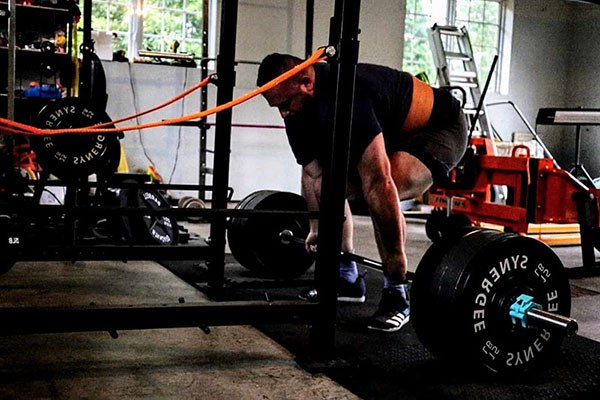
Hugo prepares to deadlift a set of five in the high 400s. [photo courtesy of James Rodgers]
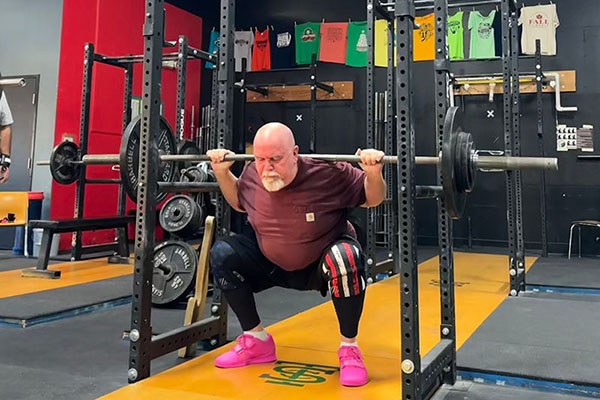
Anthony squats 180 lb for sets of 5 on Monday morning at Testify Strength & Conditioning in Omaha, NE. Anthony trains at Testify along with his son-in-law, Bob, and both of them are competing in the annual Testify Strengthlifting Challenge in April. [photo courtesy of Phil Meggers]
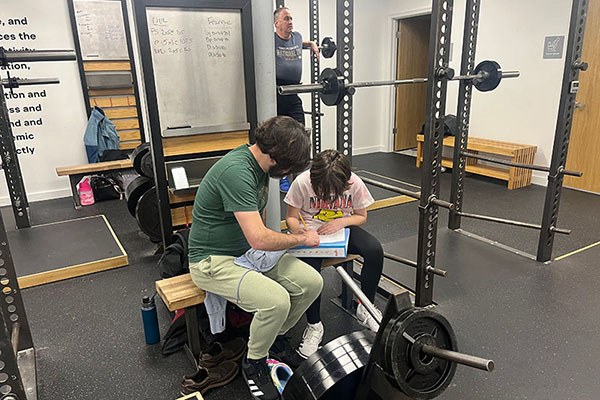
Frannie knocks out some homework while resting in between sets at Starting Strength Cincinnati with her dad and fellow member Neil. [photo courtesy of Luke Schroeder]

New and long-standing members of Starting Strength Boston got together for our Winter Meetup at the Bluebird Bar & Grill across the street. [photo courtesy of Arthur Frontczak]
Get Involved
Best of the Week
The Literature
tommy4life
Intro- I recently read this article on T-nation The Problem With “Exercise Science” on the lousy state of exercise literature. Whilst I am not familiar with the exercise literature I’m not surprised since I see something similar in the nutrition literature, and pretty much in all the humanities. I should mention that I am in academia, but in the applied biology and biotechnology field, not exercise. I am also a recreation lifter and I sometimes check out the nutrition literature as it’s relevant to my field of study. Many of my colleagues in the food science sector often snigger at the nutrition academics/dieticians we meet at conferences.
Anyway, my question is this. Why don’t you or members of your staff try and publish in peer reviewed journals? I understand it might be hard for you to get past the filtering system, since you don’t have a PhD or academic affiliations, but you have several staff with PhDs. Maybe you even have a few members who are currently affiliated with research laboratories. Surely, if you and your staff/members collaborate you could produce a robust research paper with a sample size over n=10. You have access to hundreds of participants (I assume you have that since you have several SS gyms) to conduct experiments/observations on, which is hard to come by for most academics in that field. Do you believe this wouldn’t be worth it, or is it simply because you disdain the peer-review process and want nothing to do with it?
Mark Rippetoe
I don’t see the point. Why would we want to improve their literature for them, when they don’t even recognize that we exist? As Kirk said to Spock about the Klingons, “Let them die.”
Best of the Forum
Bodyweight target- 5’6.5 tall
NicholasAstro
Hey Mark, curious about your opinion on the ideal body weight range for a lifter between 5’6 and 5’7 in height. I’ve been as heavy as 210 and started the program at 148. I had my best lifts at 198, and l like the way I look best around that weight. Anything under 190 and I think I look skinny. Thoughts?
Mark Rippetoe
Ed Coan was 242 at 5’5″.
[adinserter block=”2″]
Credit : Source Post




